Excellent Harbour Gourmet from All Over the World – Voyage Writer’s Experience
Sail while Experiencing Many Different Food Cultures
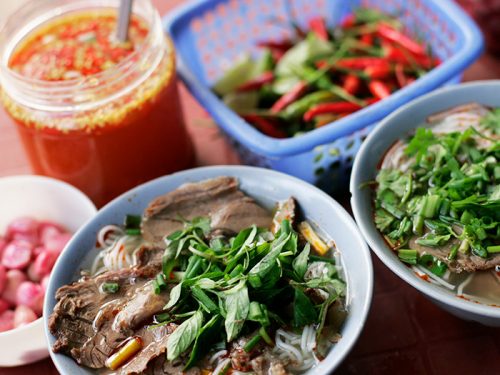
One of the great pleasures of a cruise is food. On a round-the-world cruise that includes all meals through the voyage, you can eat breakfast, lunch, and dinner in the main restaurant, or in a buffet restaurant. Peace Boat Cruises procures the freshest seasonal ingredients from around the world, and our Japanese chef provides world cuisine in a way that suits the tastes of many people. The ability to experience the culinary culture of different regions of the world from the comfort of a ship is a luxury that only a round-the-world cruise can offer. However, the real thrill of a round-the-world cruise is to enjoy local cuisine in an unfamiliar land. This time, I would like to explore the harbour gourmet from around the world based on my own experiences.
Written by Tomoyoshi Kanamaru (Voyage writer) A nautical writer who has cruised not only throughout Japan but also to the five continents of the world. He writes for Cruise Ship Collection, which introduces cruise ships from around the world, and contributes serial articles and cruise reports to the magazine Cruise (Kaiji Press).
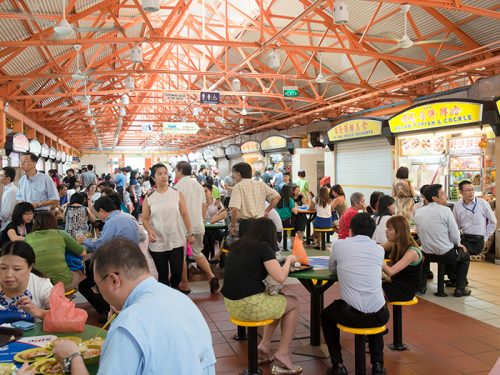
A Taste of UNESCO’s Intangible Cultural Heritage at Hawkers
Hawkers, or food stalls, are a wallet-friendly way to taste local food in Singapore. There is a famous hawkers market in Chinatown, a short subway ride from the cruise terminal. Here you can find Hainanese chicken rice, duck rice, biryani, satay, nasi goreng, laksa. The food in the stalls is rich in variety, as only a multi-ethnic nation with Chinese, Malay, Indian, and other ethnic groups can offer. Many of the fruits and desserts are also tropical, which is unique to the equatorial region. Singapore’s hawker culture is registered as a UNESCO Intangible Cultural Heritage. This is not just a harbour gourmet meal. It is a rare experience to taste a cultural heritage.
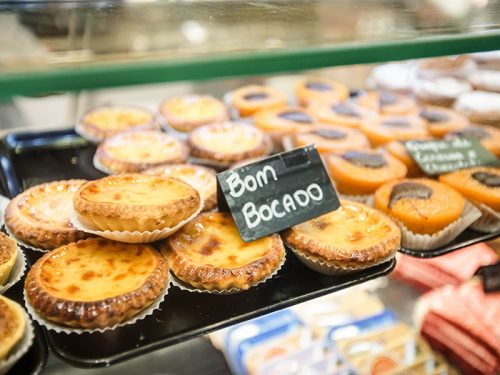
Lisbon’s food that gives the feeling of the Age of Discovery
Lisbon is located at the western end of the Eurasian continent. I was surprised to see many restaurants and houses serving char-grilled sardines all over the city. It was as if I was in Japan, the eastern end of the same continent. In fact, sardines are a traditional Portuguese food. I enjoyed the sardines with coarse salt in my mouth with a glass of Portuguese red wine, which became world-famous during the Age of Discovery. The dessert was pastel de nata. It is Portugal’s national sweet, known as an egg tart. Its birthplace is the Jerónimos Monastery, a World Heritage site that preserves the glory of the Age of Discovery. I felt the breath of the Age of Discovery with my taste buds.

Thinking of faraway Malay in Cape Town, the southern tip of Africa
On Long Street, a gently sloping road leading up to Table Mountain, I entered a restaurant serving African-style meat dishes. I tried kudu (antelope), black wildebeest, and ostrich, which tasted surprisingly light. I enjoyed the meat with a glass of Cape wine. Nearby is Bo Kaap, a corner of colorful buildings. This is the area where the Cape Malays live. Cape Malays are descendants of people brought from Malay and Indonesia after the Dutch settled in the area. Their cuisine has a curry flavor reminiscent of Southeast Asia, richly spiced but not spicy. This is the southernmost tip of Africa, where the waters of the Indian and Atlantic Oceans meet. Cuisine is also a mixture of different cultures.
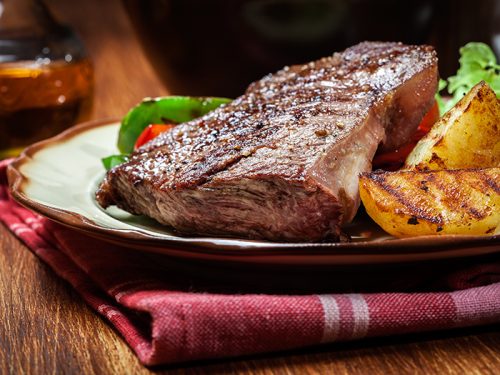
A Day in Boca with Steak and Tango
Boca, the port city of Buenos Aires, has accepted many immigrants. I took lunch at one of the steakhouses that are commonly known as Parrilla. As the country with the world’s highest annual per capita consumption of steak, the quality of the meat was also of the highest level. The meat was so tender that the knife fell right through. Tango was born in Boca from a mixture of music of various ethnic groups that crossed the sea in pursuit of their dreams. In the San Telmo district adjacent to Boca, tanguerias, places where tango shows are performed, line the streets. The long night in Buenos Aires passed as I enjoyed light meal with delicious wine and the enchanting sounds of the bandoneon and the fascinating dancing of men and women.
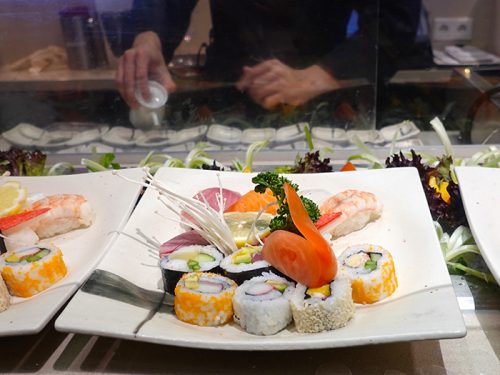
A Unique Sushi Experience in Vancouver
I walked out to Robson Street from Canada Place, where the ship docked. Walking along the street lined with ramen shops and izakayas (Japanese-style pubs), I felt as if I were back in Japan. The word “Sushi” caught my attention. However, the sushi here was different from that of Japan. There were the BC roll with salmon and cucumber dipped in sweet sauce, the Dynamite roll with prawn tempura and avocado, and the Teriyaki roll, to name a few. Many of the restaurant owners are from Korea and Hong Kong, so the flavors are similar to those of their home countries. Vancouver is a port city that has developed from the exchange between East and West. The strange collaboration of Canadian sushi, which seems to embody this, was surprisingly not bad.
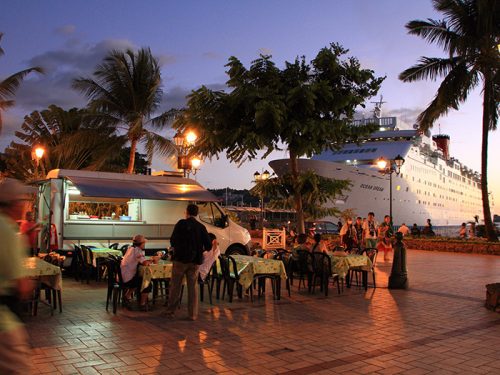
Find the Ultimate Harbor Food in Papeete with Roulotte
Around 6 pm, food trucks called Roulotte start to crowd the quay square in front of where the ship is docked in Papeete. Because Tahiti is a French territory, there are “Galette” which are crepes made from buckwheat flour and French bread. Also always available are “Poisson Cru” made from chopped raw tuna fish mixed with vegetables and coconut milk and stir-fried noodles, a Chinese dish consisting of beef, vegetables and noodles in a soy sauce-flavored sauce, and so on. Alcohol is prohibited in all Roulotte restaurants, so it may be a good idea to go for a local HINANO beer before or after dinner. Roulotte appears right in front of the ship. It is the ultimate harbor food, with a mix of Eastern, Western, and South Seas flavors.
PHOTO:PEACEBOAT, Kajiura Takashi, Mizumoto Shunya, Okuhira Keita, Suzuki Shoichi, Yuruki Shiho, shutterstock.com
